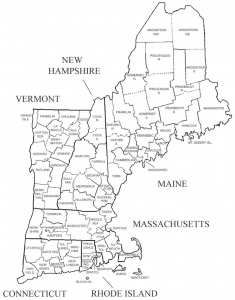 The colonial houses, stone walls, fall foliage and covered bridges that we often think of when thinking of Maine, New Hampshire, Massachusetts, Connecticut and Vermont are being overshadowed. An epidemic has hit New England; an epidemic of addiction, particularly heroin and opioid addiction. Like much of the Northeast, the increase in heroin use in New England has skyrocketed in past few years. According to the Massachusetts Department of health the number of unintentional fatal opioid overdoses in Massachusetts from 2000 to 2012 increased by 90 percent. (Citation)
The colonial houses, stone walls, fall foliage and covered bridges that we often think of when thinking of Maine, New Hampshire, Massachusetts, Connecticut and Vermont are being overshadowed. An epidemic has hit New England; an epidemic of addiction, particularly heroin and opioid addiction. Like much of the Northeast, the increase in heroin use in New England has skyrocketed in past few years. According to the Massachusetts Department of health the number of unintentional fatal opioid overdoses in Massachusetts from 2000 to 2012 increased by 90 percent. (Citation)
Along with the sharp increase in opioid addiction there is a lack of available treatment in the New England States. According to an article by Sonia Scherr in the Valley News of West Lebanon, NH, a local paper serving the Connecticut River Valley, there is a shortage of treatment options in the Upper Valley and the Twin States. The article goes on to say the problem is especially severe in the areas of inpatient, intensive outpatient and adolescent treatment. (Citation)
The lack of treatment availability often results in long wait lists, which for an addict or alcoholic means either not going in to treatment, continued drug use or prolonged and sometimes dangerous withdrawal.
According to a report by the Massachusetts Department of Public Health, “on March 27, 2014, in response to the crisis of opioid abuse in the Commonwealth and after meeting individuals and families impacted by it, Governor Patrick declared a public health emergency and, among other actions, committed an additional $20 million in state funding to increase treatment and recovery services’. (Citation)
While action is being taken to improve the availability of treatment, there remains a deficit in treatment options in the New England region. One solution to the problem is for the addict to travel to another part of the country for treatment. In addition to the possibility of greater availability, other benefits may be realized by leaving the local area. Being separated from family, friends and familiar places and routines can provide the patient with an environment of fewer distractions and triggers and lesser availability of drugs. It can also create a necessary disruption to complacency and denial, assisting the addict to understand the severity of their condition. A third benefit may be the appeal of a different climate, particularly during the winter months, when a month or two in warmer weather may be enticing and help motivate the election of treatment.
The addict’s family may also benefit from having some distance from the addict. It may help them to learn to detach and end the cycle of enabling, as well as have a much needed respite from being in a care-giving role that is all too often an overly stressful burden. Families can still participate in the recovery process through phone conferences, a possible visit for a Family Weekend or other pre-arranged family therapy session and, of course, participation in Al-anon, Naranon, Families Anonymous or another 12 Step program.
With the epidemic nature of opioid substance abuse, alternatives to local treatment are a necessity and important supplement to local facilities. As more facilities are built and more local beds are added, traveling farther for treatment may become a choice rather than a requirement, however until that happens, the need for immediate action to address this epidemic logically involves seeking treatment wherever it is available.
If you or a loved one need drug or alcohol rehab contact the specialists at Beachway Therapy Center or call 888-345-7505. We have team members standing by 24hrs a day, 7 days a week to help.
This blog was written by: Elizabeth Ossip, LCSW
